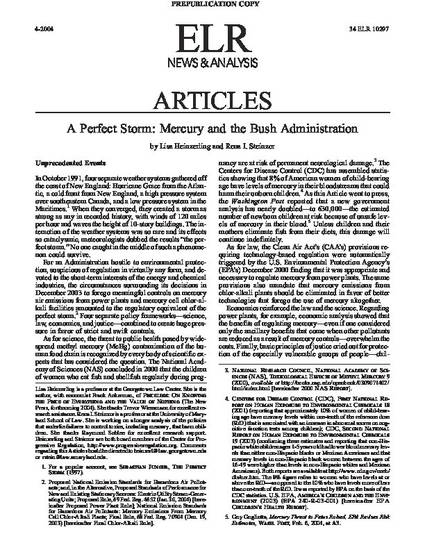
- EPA,
- Environmental Protection Agency,
- mercury emissions
In December 2003, the Environmental Protection Agency (EPA) proposed a rule for mercury emissions from power plants and issued a final rule for mercury emissions from chlor-alkali facilities. Regarding power plants, EPA had previously found that mercury posed the most serious threat among the hazardous air pollutants emitted by power plants, and also that regulation of mercury from power plants was appropriate and necessary under section 112 of the Clean Air Act, which requires stringent technology-based regulation for hazardous air pollutants. Despite section 112's clear rejection of emissions trading as a compliance option, EPA has proposed to allow commercial trading in this highly toxic substance. In addressing mercury from chlor-alkali plants, EPA admitted that approximately 65 tons of mercury from these plants (more than the total emitted by U.S. power plants) are unaccounted for, and allowed the plants using the most antiquated technology to continue to do so indefinitely. The first of a two-part series, this article canvases the science and law on mercury emissions, and finds that EPA's decisions are deeply defective in both realms. The next installment will examine the agency's decisions from the perspective of economics and environmental justice.
Available at: http://works.bepress.com/rena_steinzor/7/
